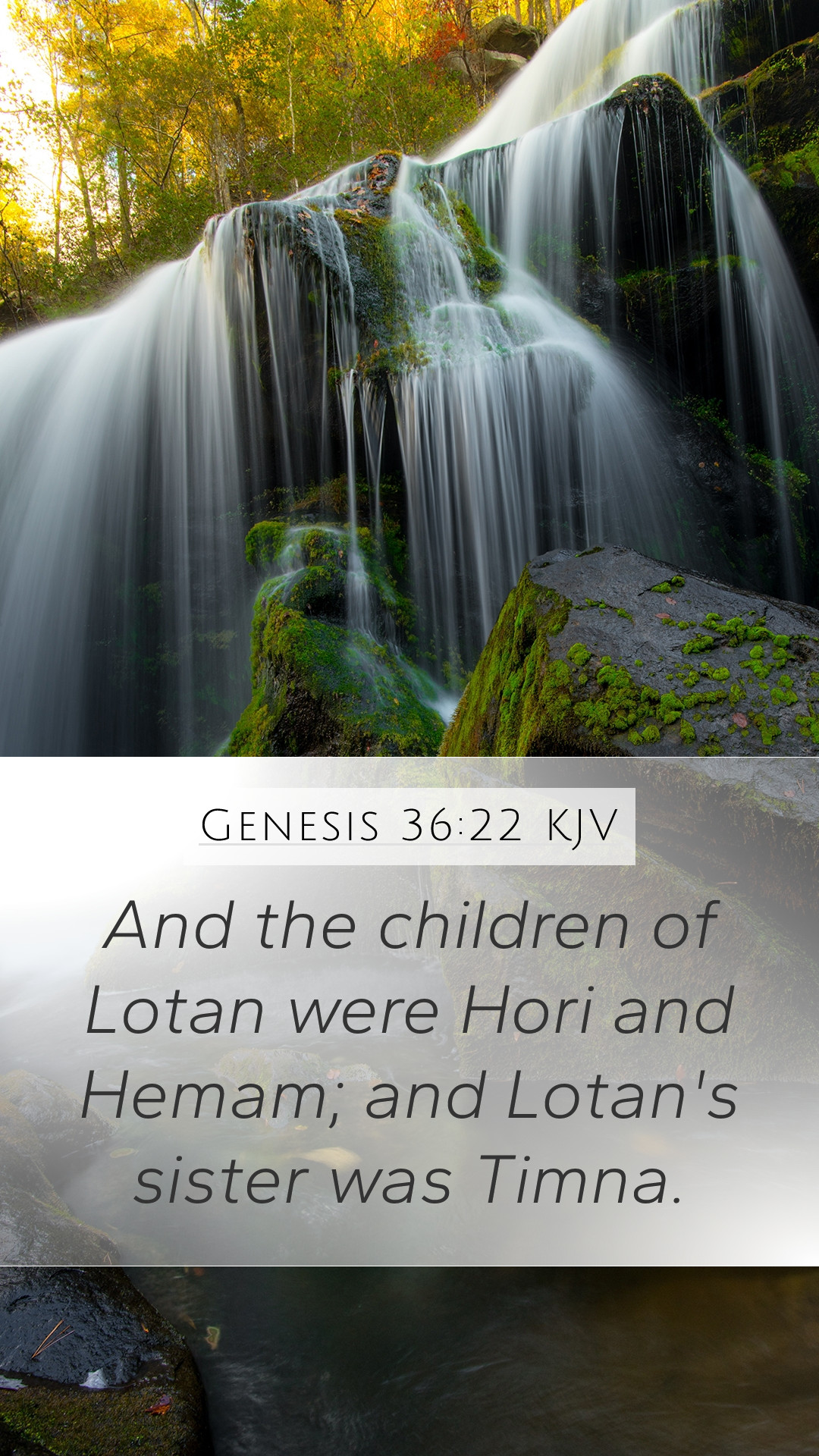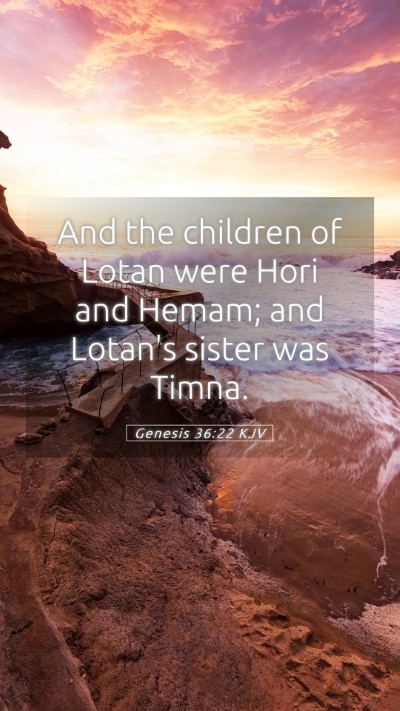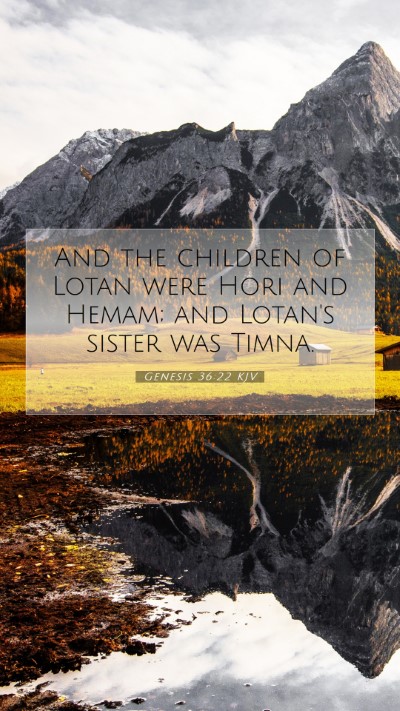Understanding Genesis 36:22
Genesis 36:22 states: "And the children of Lotan were Hori and Hemam; and Lotan's sister was Timna." This verse provides genealogical information concerning the descendants of Esau, specifically focusing on the lineage of Lotan. Understanding this verse requires an exploration of its wider context within the chapter and its significance in the biblical narrative.
Contextual Overview
The context of Genesis 36 is crucial to understanding this genealogy. It is a chapter that details the generations of Esau, who is also called Edom, and it lists various clans and names that are foundational to the Edomite people. The importance of genealogies in the Bible is significant as they reflect historical records, tribal affiliations, and fulfillments of God's promises.
Bible Verse Commentary
-
Matthew Henry's Commentary:
Henry emphasizes that genealogies serve not merely as records but also illustrate God's faithfulness in fulfilling His promises to Abraham, Isaac, and Jacob. In this instance, the descendants of Lotan are put forward as part of Esau’s lineage, showing how the Edomites descended from Isaac’s family.
-
Albert Barnes' Notes:
Barnes notes that the mention of Lotan and his children underlines the diversity within Esau's family and the significance of specific names in tracking the heritage and development of clans among the Edomites. This reflects broader themes of separation and distinction between the families of Jacob and Esau.
-
Adam Clarke's Commentary:
Clarke highlights the cultural practices of the era, where genealogies were essential for claiming land, heritage, and identity. Lotan’s mention in this lineage offers insights into the ancient customs of naming and inheritance, as each name holds significance in the narrative of the people of Israel and their rivals.
Significance of Genealogies
Genealogies in the Bible, such as the one presented in Genesis 36:22, serve multiple purposes:
- They demonstrate God's plan through generations.
- They establish a historical record for the tribes of Israel and their neighbors.
- They reflect the fulfillment of prophecies and promises.
- They indicate the social structure of the time, including tribal affiliations and lineage importance.
Application of Genesis 36:22
For contemporary readers, Genesis 36:22 serves as a reminder of the importance of heritage and identity. Understanding one’s roots can inform personal identity and belief systems.
Furthermore, engaging with genealogies allows for deeper Bible study insights, as they often lead to broader discussions about the implications of being part of God’s covenant community.
In-Depth Analysis
This verse prompts the inquisitive to delve deeper into historical context, including:
- Historical significance related to Edom and its interactions with Israel.
- How genealogies affect the understanding of Old Testament prophecies.
- The role of Edom in the greater narrative of Israel’s history.
Cross References
Related verses that provide further insight include:
- Genesis 25:30 - Discusses the relationship between Esau and Jacob.
- Obadiah 1:10 - Addresses the future of Edom as descendants of Esau.
- Exodus 15:15 - Mentions Edom in the context of Israel's journey.
Conclusion
Genesis 36:22, while seemingly a simple genealogical note, opens the door to significant exploration of biblical themes, historical context, and applications for understanding Scripture. By engaging in scripture analysis and considering the insights from public domain commentaries, readers can gain a more profound appreciation for the enduring narratives and their implications for today.


